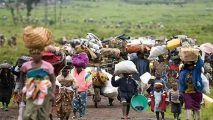Categories
Recent Posts
Archives
- April 2025
- March 2025
- February 2025
- January 2025
- December 2024
- November 2024
- October 2024
- September 2024
- August 2024
- July 2024
- June 2024
- May 2024
- April 2024
- March 2024
- February 2024
- January 2024
- December 2023
- November 2023
- October 2023
- September 2023
- August 2023
- July 2023
- June 2023
- May 2023
- April 2023
- March 2023
- February 2023
- January 2023
- December 2022
- November 2022
- October 2022
- September 2022
- August 2022
- July 2022
- June 2022
- May 2022
- April 2022
- March 2022
- February 2022
- January 2022
- December 2021
- November 2021
- October 2021
- September 2021
- August 2021
- July 2021
- June 2021
- May 2021
- April 2021
- March 2021
- February 2021
- January 2021
- December 2020
- November 2020
- October 2020
- September 2020
- August 2020
- July 2020
- June 2020
- May 2020
- April 2020
- March 2020
- February 2020
- January 2020
- December 2019
- November 2019
- October 2019
- September 2019
- August 2019
- July 2019
- June 2019
- May 2019
- April 2019
- March 2019
- February 2019
- January 2019
- December 2018
- November 2018
- October 2018
- September 2018
- August 2018
- July 2018
- June 2018
- May 2018
- April 2018
- March 2018
- February 2018
- January 2018
- December 2017
- November 2017
- October 2017
- September 2017
- August 2017
- July 2017
- June 2017
- May 2017
- April 2017
- March 2017
- February 2017
- January 2017
- December 2016
- November 2016
- October 2016
- September 2016
- August 2016
- July 2016
- June 2016
Featured
 Prosecution of journalists in Cameroon: European Parliament says enough red flags have been ignored
Prosecution of journalists in Cameroon: European Parliament says enough red flags have been ignored  1982-2025: How long will Biya hang on?
1982-2025: How long will Biya hang on?  How Biya and Archbishop Nkea protected the sanctity of the family in Cameroon
How Biya and Archbishop Nkea protected the sanctity of the family in Cameroon  October Presidential Election: Will 92-year-old Biya be re-elected?
October Presidential Election: Will 92-year-old Biya be re-elected?  Why is Biya seeking re-election?
Why is Biya seeking re-election?
Most Commented Posts
 4 Anglophone detainees killed in Yaounde
4 Anglophone detainees killed in Yaounde
18 comments Chantal Biya says she will return to Cameroon if General Ivo Yenwo, Martin Belinga Eboutou and Ferdinand Ngoh Ngoh are sacked
Chantal Biya says she will return to Cameroon if General Ivo Yenwo, Martin Belinga Eboutou and Ferdinand Ngoh Ngoh are sacked
13 comments The Anglophone Problem – When Facts don’t Lie
The Anglophone Problem – When Facts don’t Lie
12 comments Anglophone Nationalism: Barrister Eyambe says “hidden plans are at work”
Anglophone Nationalism: Barrister Eyambe says “hidden plans are at work”
12 comments Largest wave of arrest by BIR in Bamenda
Largest wave of arrest by BIR in Bamenda
10 comments
Latest Tweets
Featured
-

Algeria blocks flights from Mali after drone shot down
-

CRTV pays 850M CFA Francs, settling artist royalty arrears
-

Niat tops list of 10 oldest senate presidents in Africa
-

UN says 78,000 Southern Cameroonians sought asylum in Nigeria
-

Yaoundé relies on short-term debt to cover budget needs in 2024
-

Southwesterners form SWELA Chapter in Belgium to strengthen bonds
-

Pope greets crowds at Vatican in first appearance since leaving hospital
© Cameroon Concord News 2025
15, April 2024
World Bank says despite high potential, 75 vulnerable economies face ‘Historic Reversal’ 0
by soter • Business, Headline News, World
Despite their high potential to advance global prosperity, one-half of the world’s 75 most vulnerable countries are facing a widening income gap with the wealthiest economies for the first time in this century, a new World Bank report has found. Taking full advantage of their younger populations, their rich natural resources, and their abundant solar-energy potential can help them overcome the setback.
The report, The Great Reversal: Prospects, Risks, and Policies in International Development Association Countries, offers the first comprehensive look at the opportunities and risks confronting the 75 countries eligible for grants and zero to low-interest loans from the World Bank’s International Development Association (IDA). These countries are home to a quarter of humanity—1.9 billion people. At a time when populations are aging nearly everywhere else, IDA countries will enjoy a growing share of young workers through 2070—a huge potential “demographic dividend.” These countries are also rich in natural resources, enjoy high potential for solar-energy generation, and boast a large reservoir of mineral deposits that could be crucial for the world’s transition to clean energy.
Yet a historic reversal is underway for them. Over 2020-24, average per capita incomes in half of IDA countries—the largest share since the start of this century—have been growing more slowly than those of wealthy economies. This is widening the income gap between these two groups of countries. One out of three IDA countries is poorer, on average, than it was on the eve of the COVID-19 pandemic. The extreme-poverty rate is more than eight times the average in the rest of the world: one in four people in IDA countries struggles on less than $2.15 a day. These countries now account for 90 percent of all people facing hunger or malnutrition. Half of these countries are either in debt distress or at high risk of it. Still, except for the World Bank Group and other multilateral development donors, foreign lenders—private as well as government creditors—have been backing away from them.
“The world cannot afford to turn its back on IDA countries,” said Indermit Gill, the World Bank Group’s Chief Economist and Senior Vice President. “The welfare of these countries has always been crucial to the long-term outlook for global prosperity. Three of the world’s economic powerhouses today—China, India, and South Korea—were all once IDA borrowers. All three prospered in ways that whittled down extreme poverty and raised living standards. With help from abroad, today’s batch of IDA countries has the potential to do the same.”
More than half of all IDA countries—39 in all—are in Sub-Saharan Africa. Fourteen of them—mainly small island states—are in East Asia, and eight are in Latin America and the Caribbean. In South Asia, all countries except for India are IDA countries. Thirty-one IDA countries have per capita incomes of less than $1,315 a year. Thirty-three are fragile and conflict-affected states.
IDA countries share similar opportunities. The “demographic dividend”—a deep and growing reserve of young workers—is one of them. Abundant natural resources is another. These countries account for about 20 percent of global production of tin, copper, and gold. In addition, some IDA countries possess critical mineral deposits essential for the global energy transition. Because of their abundant sunshine, most IDA countries are well situated to take advantage of solar energy. On average, their long-term daily solar-electricity generation potential is among the highest in the world.
This potential, however, comes with risks that must be managed. To reap the demographic dividend, IDA governments will need to undertake policies to improve education and health outcomes and make sure that jobs are available for the rising number of young people who will enter the workforce in the coming decades. To seize the full potential of their natural-resource wealth, IDA countries will need to improve policy frameworks and build stronger institutions capable of better economic management. All of this will require ambitious domestic policy reforms—and significant financial support from the international community.
“IDA countries have incredible potential to deliver strong, sustainable, and inclusive growth. Realizing this potential will require them to implement an ambitious set of policies centered on boosting investment,” said Ayhan Kose, the World Bank’s Deputy Chief Economist and Director of the Prospects Group. “This means improving fiscal, monetary, and financial policy frameworks and advancing an array of structural reforms to strengthen institutions and enhance human capital.”
IDA countries today have large investment needs. In the poorest of them, closing existing development and infrastructure gaps and building resilience to climate change will require investment that amounts to nearly 10 percent of GDP. The costs of climate disasters have doubled in IDA countries over the past decade: Economic losses from natural disasters average 1.3% of GDP a year—four times the average of other emerging market and developing economies. Such needs will require IDA countries to generate sustained investment booms—the type that boosts productivity and incomes and reduces poverty. Historically, such investment booms have often been sparked by a comprehensive package of policy measures—to bolster fiscal and monetary frameworks, ramp up cross-border trade and financial flows, and improve the quality of institutions. Such reforms are never easy, the report notes. They need careful sequencing and implementation. But previous IDA countries have shown they are possible.
IDA countries will need significant international financial support to make progress and lower the risk of “protracted stagnation,” the report notes. Stronger cooperation on global policy issues—including fighting climate change, facilitating more timely and effective debt restructurings, and supporting cross-border trade and investment—will also be crucial to help IDA countries avert a lost decade in development.